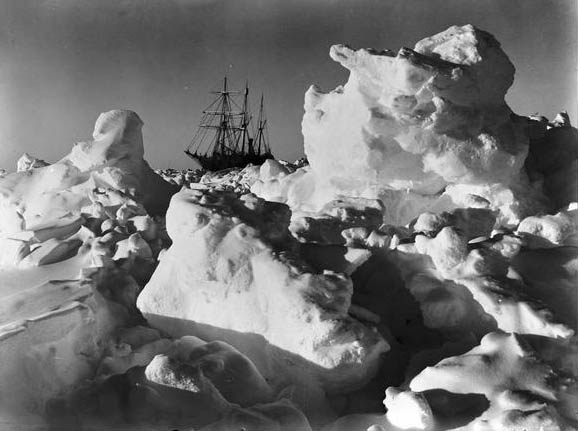 “By endurance we conquer” – Shackleton family motto
“By endurance we conquer” – Shackleton family motto
The aim of Shackleton’s Endurance Expedition (or the Imperial Trans-Antarctic Expedition to use its official name) was to traverse Antarctica, from the Weddell Sea to the Ross Sea, via the South Pole. It would prove to be the last major attempt of the Heroic Age of Antarctic Exploration.
This would be a mighty undertaking. Shackleton was well aware of how dangerous this land could be; Captain Scott and his team had died partway through their return journey from the Pole. Any adventure of this magnitude would require planning, discipline, bravery, good men and a strong leader. Luckily, the Endurance Expedition possessed all of these qualities.
One of the absolute requirements of successful Antarctic travel was laying supply depots along the way. This meant the men would have to carry less provisions on their main journey, and would also provide a safety net if the elements turned against them. Scott’s party perished just 11 miles from their nearest depot, one which Scott had placed far short of its original intended location (due to the supply ponies struggling with the harsh climate). If Scott had perservered at the start, and pushed on with the depot laying, it is possible he might have saved himself and his men at the end.
The plan was to have two ships – the Endurance under Shackleton and the Aurora under Captain Mackintosh – one at either end of the continent. The respective crews would begin laying depots further inland, each covering half of the journey. Shackleton and six of his men (along with 69 dogs and two primitive motorised sledges) would make the complete trip to meet the Aurora at the other end. His remaining men would stay with the Endurance and carry out scientific research. It was a good plan, but it would never be carried out.
A few days after the Endurance set sail, a stowaway was discovered; a young man named Perce Blackborow. In order to make an example of the boy in front of the crew, Shackleton flew into a rage, culminating in the warning that if times got tough, the stowaway was always the first to be eaten. Unfazed by this tirade, Blackboro replied that the men would get more meat off Shackleton. Shackleton had to stifle a smile, the tension was broken, and the boy became part of the crew (to get the last word, Shackleton instructed that the young man should be introduced to the cook first).
This humorous episode provides an important insight into Shackleton’s character. Although he may have genuinely lost his temper at the beginning, he was able let this emotion go and see the lighter side of the situation. His amused response to Blackboro’s cheeky reply (some would say insult) shows that he was not vain or precious, and could accept a witty quip at his expense. Credit is also due to Blackboro for acting so laconically in such a heated situation.
Throughout the expedition, with all its gruelling hardships, Shackleton never forgot the necessity to maintain good humour. Keeping the men’s spirits up was just as important as their physical condition, as we shall see in the forthcoming Part III.

